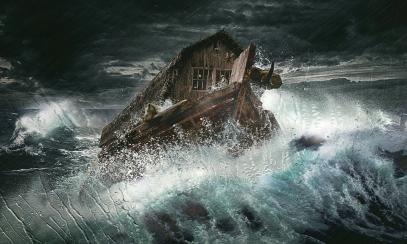Hannah Arendt
The appearance of an art house film on the philosopher Hannah Arendt has sparked renewed interest in an old controversy. In 1961, Arendt went to Jerusalem as a correspondent for the New Yorker magazine to cover the trial of Adolf Eichmann, the notorious Nazi colonel accused of masterminding the transportation of millions of Jews to the death camps. Arendt was herself a Jew who had managed to escape from Nazi Germany and who had been, years before, something of an ardent Zionist. But she had since grown suspicious of the Israeli state, seeing it as un-self-critical and indifferent to the legitimate concerns of the Palestinians. I think it is fair to say, therefore, that she came to the trial with a complicated set of assumptions and a good deal of conflicting feelings.
As the trial unfolded, Arendt was massively put off by what she saw as the grandstanding of the prosecutors. Their irresponsible, even clownish, antics were, she concluded, the public face of the Israeli state, which had determined to make of the Eichmann proceedings a show trial. But what struck her most of all was Eichmann himself. Sequestered in a glass box for his own protection, squinting behind owlish spectacles, screwing up his mouth in an odd, nervous tic, trading in homespun expressions, pleading that he was just a middle-level bureaucrat following orders, Eichmann was neither impressive nor frightening nor sinister. Arendt never doubted that Eichmann was guilty of great wickedness, but she saw the Nazi functionary as the very incarnation of what she famously called “the banality of evil.” One of the distinctive marks of this banality Arendt characterized as Gedankenlosigkeit, which could be superficially rendered in English as “thoughtlessness,” but which carries more accurately the sense of “the inability to think.” Eichmann couldn’t rise above his own petty concerns about his career and he couldn’t begin to “think” along with another, to see what he was doing from the standpoint of his victims. This very Gedankenlosigkeit is what enabled him to say, probably with honesty, that he didn’t feel as though he had committed any crimes.
The film to which I referred at the outset very effectively portrays the firestorm of protest that followed Arendt’s account of the Eichmann trial. Many Jews, both in Israel and America, thought by characterizing Eichmann the way she did, she had exonerated him and effectively blamed his victims. I won’t descend into the complexity of that argument, which rages to some degree to the present day. But I will say that I believe Arendt’s critics missed the rather profound metaphysical significance of what the philosopher was saying about the Nazi bureaucrat. In a text written during the heat of bitter controversy surrounding her book, Arendt tried to explain in greater detail what she meant by calling evil banal: “Good can be radical; evil can never be radical, it can only be extreme, for it possesses neither depth nor any demonic dimension, yet—and this is its horror!—it can spread like a fungus over the surface of the earth and lay waste the entire world.”
The young Hannah Arendt had written her doctoral dissertation under the great German philosopher Karl Jaspers, and the topic of her work was the concept of love in the writings of St. Augustine. One of the most significant intellectual breakthroughs of Augustine’s life was the insight that evil is not something substantial, but rather a type of non-being, a lack of some perfection that ought to be present. Thus, a cancer is evil in the measure that it compromises the proper functioning of a bodily organ, and a sin is evil in the measure that it represents a distortion or twisting of a rightly functioning will. Accordingly, evil does not stand over and against the good as a kind of co-equal metaphysical force, as the Manichees would have it. Rather, it is invariably parasitic upon the good, existing only as a sort of shadow. J.R.R. Tolkien gave visual expression to this Augustinian notion in his portrayal of the Nazgul in The Lord of the Rings. Those terrible and terrifying threats, flying through the air on fearsome beasts, are revealed, once their capes and hoods are pulled away, to be precisely nothing, emptiness. And this is exactly why, to return to Arendt’s description, evil can never be radical. It can never sink down into the roots of being; it can never stand on its own; it has no integrity, no real depth or substance. To be sure, it can be extreme and it can, as Arendt’s image suggests, spread far and wide, doing enormous damage. But it can never truly be. And this is why, when it shows up in raw form, it looks, not like Goethe’s Mephistopheles or Milton’s Satan, but rather like a little twerp in a glass box.
Occasionally, in the course of the liturgical year, Catholics are asked to renew their baptismal promises. One of the questions, to which the answer “I do” is expected, is this: “Do you reject the glamor of evil and refuse to be mastered by sin?” Evil can never truly be beautiful, for beauty is a property of being; it can only be “glamorous” or superficially attractive. The great moral lesson—articulated by both Augustine and Hannah Arendt—is that we must refuse to be beguiled by the glittering banality of wickedness and we must consistently choose the substance over the shadow.
Father Robert Barron is the founder of the global ministry, Word on Fire, and the Rector/President of Mundelein Seminary. He is the creator of the award winning documentary series, "Catholicism." Word on Fire will be releasing "The New Evangelization" documentary this Fall. Learn more at www.WordonFire.org



